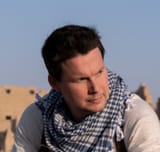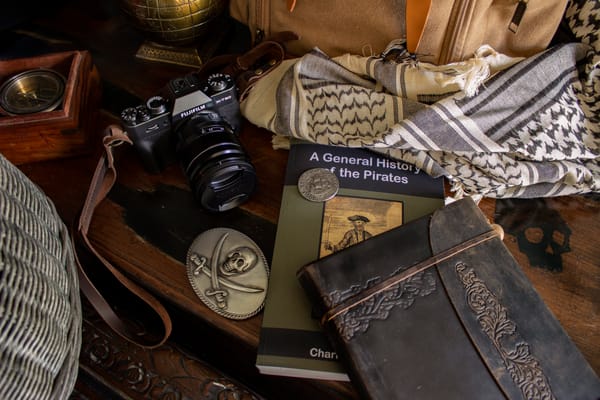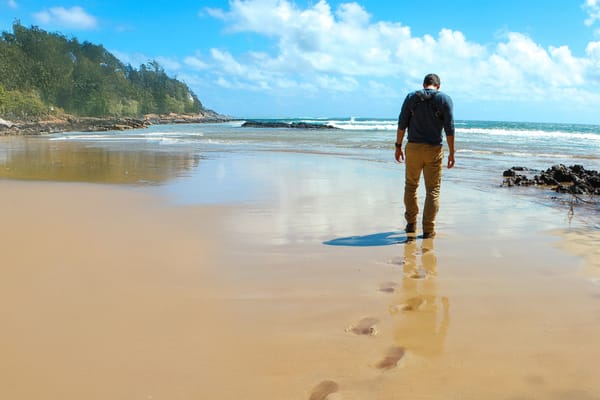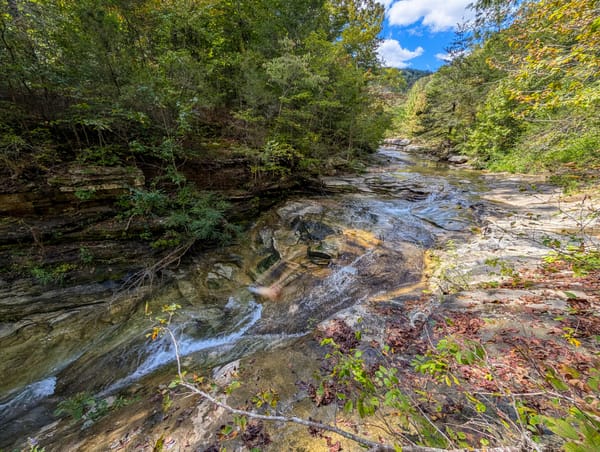Topic 0.2: Self-Assessment: Identifying Your Explorer Archetype
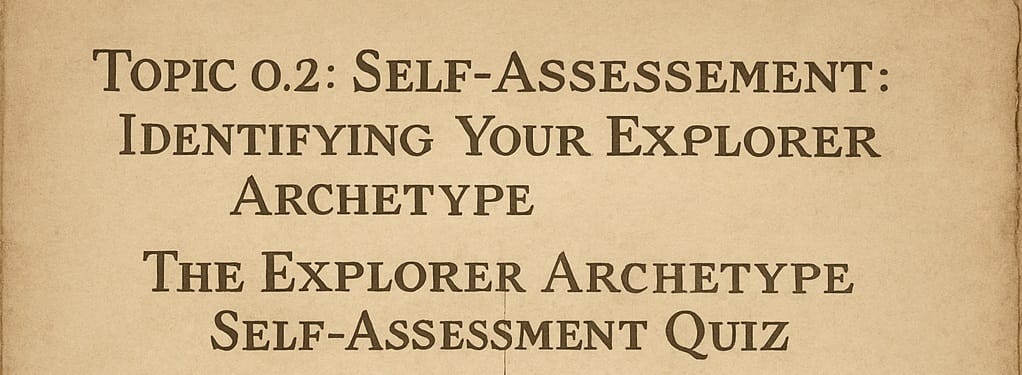
Now that you've learned about different explorer archetypes, it's time to reflect on your own inclinations and preferences. This self-assessment is designed to help you identify which archetype(s) resonate most strongly with you. There are no right or wrong answers, the goal is to gain self-awareness that can guide your future explorations.
Instructions
For each question, choose the option (A, B, C, D, or E) that best describes you or your preferences. Keep track of your answers. At the end, you'll tally your responses to see which archetype(s) you lean towards.
The Explorer Archetype Self-Assessment Quiz
1. When I think about a new, unexplored place, my first instinct is to: A) Imagine the physical challenge and the thrill of being the first to see it. B) Wonder about its history, what secrets it holds, or what I could learn there. C) Think about how I could best capture its essence to share with others (photos, writing, video). D) Consider the unique plants, animals, or natural formations I might find. E) Ponder if there are any lost artifacts, valuable resources, or hidden stories to uncover.
2. The most rewarding part of an expedition for me would be: A) Overcoming a difficult obstacle or pushing my physical limits. B) Discovering a new piece of information or solving a long-standing puzzle. C) Creating a compelling record of the journey that inspires or informs others. D) Observing a rare species in its natural habitat or understanding an ecosystem better. E) Finding something tangible that has been lost or forgotten.
3. When packing for an unknown environment, I prioritize: A) Gear that allows for maximum mobility and resilience in tough conditions. B) Tools for research, note-taking, and careful examination of findings. C) My camera, journal, and other equipment for documenting the experience. D) Equipment for observing and interacting with the natural world (e.g., binoculars, field guides). E) Tools that might help in locating or recovering items (e.g., metal detector, maps of old sites).
4. If I discovered a previously unknown ancient ruin, my primary focus would be: A) The excitement of the discovery and the challenge of accessing all its parts. B) Carefully studying its architecture, inscriptions, and any artifacts to understand its purpose and history. C) Documenting it thoroughly with photos, sketches, and notes before its story is lost. D) Assessing its impact on the local ecosystem and any unique flora/fauna that have adapted to it. E) Searching for any hidden chambers, valuable objects, or clues to a larger mystery.
5. I am most drawn to stories about explorers who: A) Braved incredible dangers and achieved seemingly impossible physical feats. B) Uncovered lost civilizations or made groundbreaking scientific discoveries. C) Brought back incredible images and tales that transported people to faraway lands. D) Showed a deep understanding and respect for the natural world they explored. E) Successfully located legendary lost treasures or solved historical riddles leading to a find.
6. When faced with a setback during an exploration, my typical reaction is to: A) Find a new, more challenging route or approach. B) Analyze what went wrong and research alternative solutions. C) See it as part of the story and document the challenges faced. D) Observe how the environment or local conditions contributed and adapt accordingly. E) Re-evaluate my clues or search strategy, looking for a missed detail.
7. The kind of knowledge I most value gaining from an exploration is: A) Understanding my own capabilities and limits. B) Factual information, historical context, or scientific data. C) Insights that can be shared to enlighten or inspire others. D) A deeper connection to and understanding of the natural world. E) Clues that lead to further discoveries or the location of something specific.
8. If I had unlimited resources for one type of expedition, I would choose to: A) Be the first to summit an unclimbed peak or explore a deep cave system. B) Fund a major archaeological dig or a research mission to a remote ecosystem. C) Create a stunning, comprehensive documentary about a little-known culture or region. D) Establish a research station in a pristine wilderness area to study its biodiversity. E) Launch a search for a famous lost treasure or a legendary lost city.
Scoring Your Results
Count how many times you chose each letter:
- Mostly A’s: You lean towards The Adventurer archetype. You are driven by challenge, thrill, and pushing boundaries.
- Mostly B’s: You lean towards The Scholar archetype. You are motivated by knowledge, research, and understanding.
- Mostly C’s: You lean towards The Documentarian archetype. You are passionate about recording, sharing, and storytelling.
- Mostly D’s: You lean towards The Naturalist archetype. You have a deep connection with the environment and a desire to understand and protect it.
- Mostly E’s: You lean towards The Treasure Hunter archetype. You are intrigued by the allure of finding lost or hidden items of value.
Interpreting Your Score
- Dominant Archetype: If one letter stands out significantly, this is likely your dominant explorer archetype.
- Blended Archetypes: It's very common to have a mix of two or even three archetypes that score closely. For example, you might be a Scholarly Adventurer or a Documentarian Naturalist. This means you have a multifaceted approach to exploration!
- No Wrong Answers: This quiz is a tool for self-reflection. Your results are meant to provide insight, not to rigidly define you. Your explorer style can also evolve over time and with experience.
Understanding your leanings can help you choose expeditions that are most fulfilling, develop skills that align with your interests, and connect with like-minded individuals. Next, we will discuss how understanding your archetype can shape your unique exploration journey.

